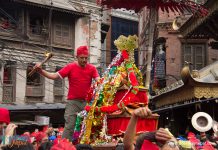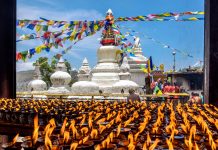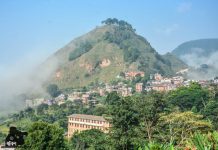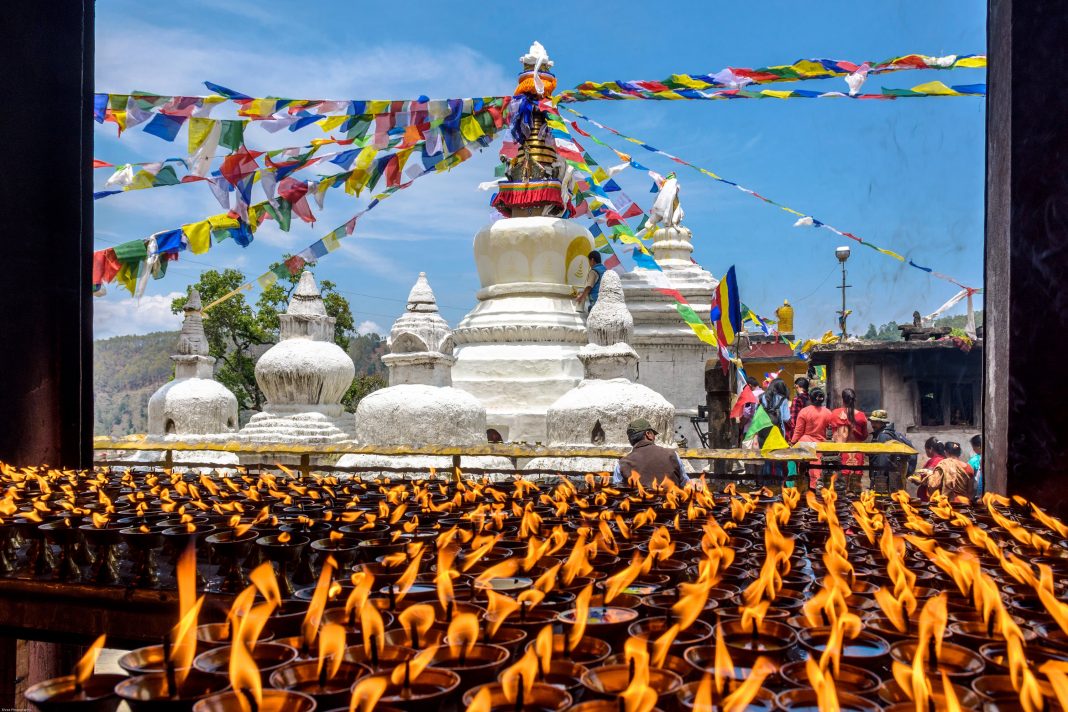A Buddhist pilgrimage sites
The iconic structures and beautiful ambiance is what you get while visiting any stupa and monasteries in Nepal. And Namo Buddha is the ideal place for short hike along with awakening your spirituality among stupas and monastery. Namo Buddha is located in Kavre district and is about 40 km southeast from Kathmandu Valley.
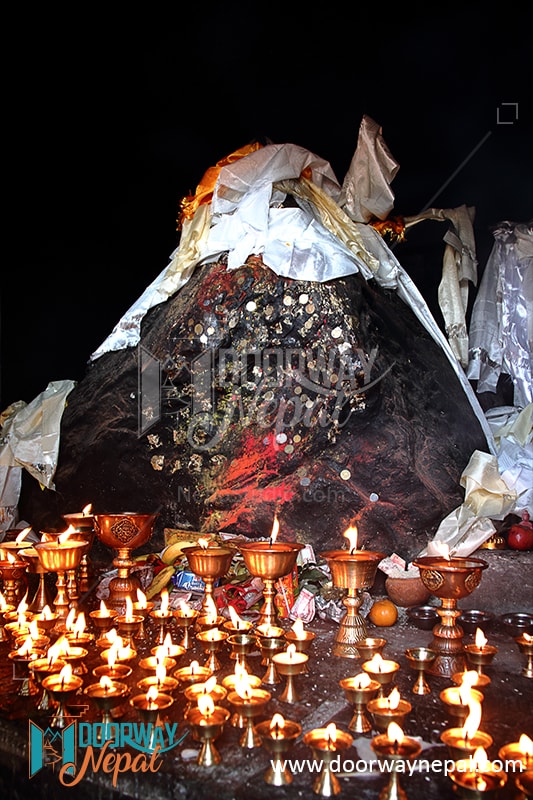
Namo Buddha is one of the holiest Buddhist pilgrimage sites in the world which is known as Takmo Lu Jin by Tibetans. Takmo Lu Jin means ‘Tigress Body Generosity’. And it is believed that this is the site where Lord Gautam Buddha encountered a tigress and her cubs who were going to die due to starvation. And out of compassion, Gautam Buddha offered them his own flesh to eat. And in remembrance of that incident in Buddha’s life, a small shrine has been built having the statues of Buddha together with tigress and her cubs.
On the other side of the hill stands the Thrangu Tashi Yangtse monastery constructed in 1976. Large numbers of pilgrims visit Namo Buddha, especially during the months of February and March.According to detail information taken from the web site of the Thrangu Tashi Yangtse monastery this is how the story goes:
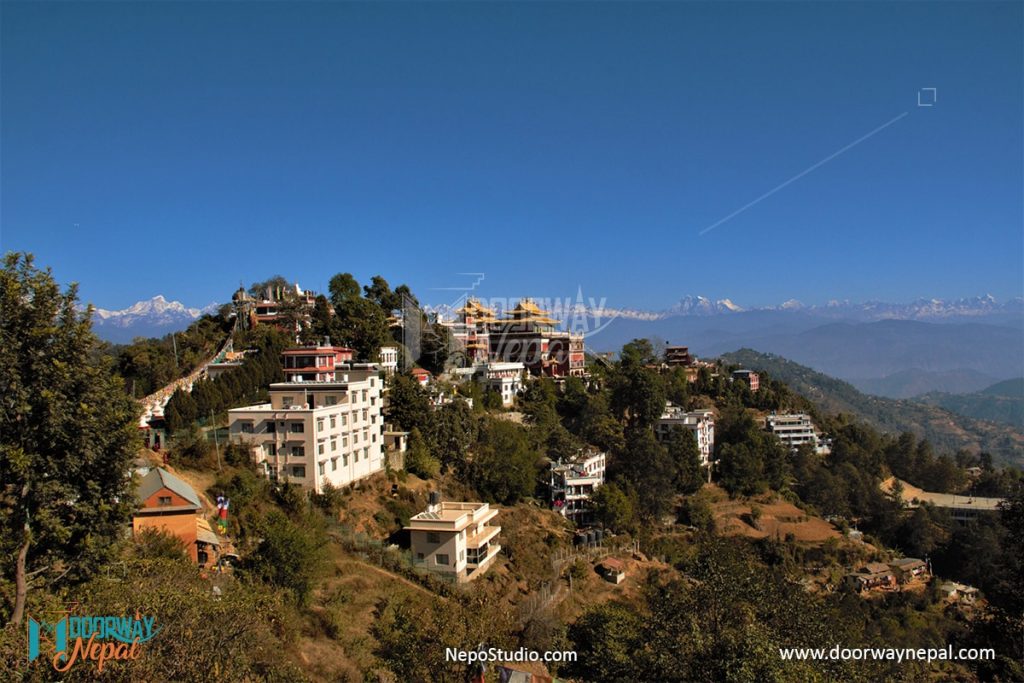
A long time in the past, many immeasurable eons ago, our teacher the perfect Buddha was practicing on the path of learning. Below is the story of how he was overcome with compassion when he saw a tigress tormented by starvation and offered his body to her without a moment’s hesitation.
In the distant past, there lived in this world a king named Great Charioteer (Shingta Chenpo) who ruled over a small kingdom of some five thousand subjects. Due to the king’s accumulation of merit, all his subjects enjoyed happiness and well being; rains came at the right time while crops and livestock flourished. The king had three sons: the oldest was named Great Sound (Dra Chenpo), the middle Great Deity (Lha Chenpo), and the youngest Great Being (Semchen Chenpo). Powerful in the martial arts and radiating confidence, the two elder sons always helped the king in governing the kingdom. From his earliest years, the youngest son, Great Being, was very bright and endowed with spontaneous kindness and compassion. He gave freely and generously to others as if to his only child.
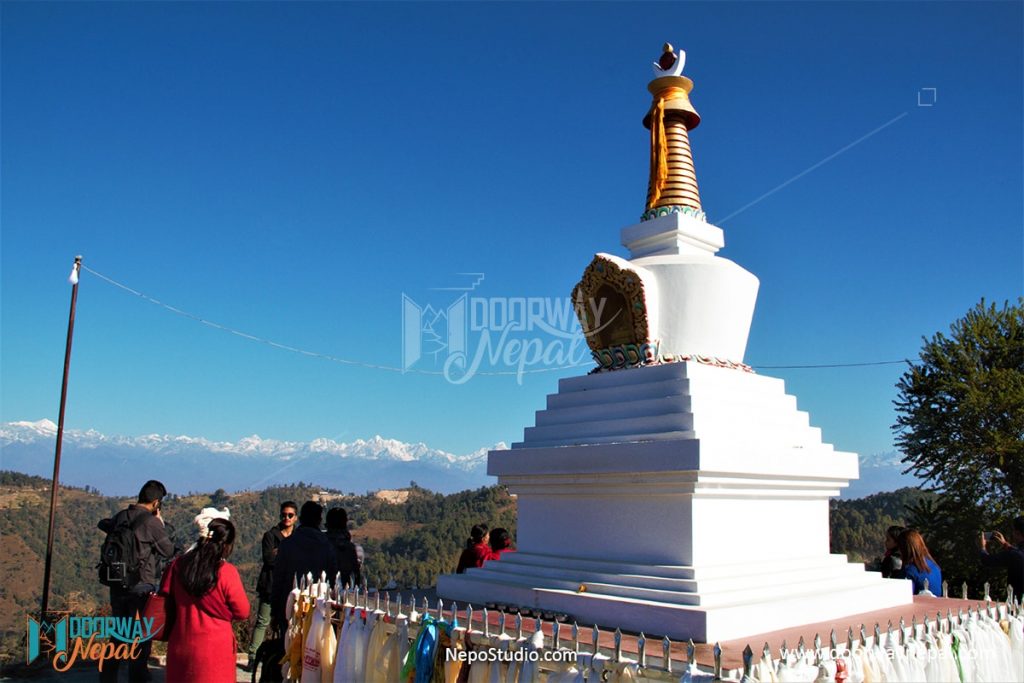
One day when the weather was fine, the king along with his queen, sons, and ministers left the town for a relaxing time in the country. The king and queen rode upon an elephant while the sons, ministers, and retinue were mounted on beautiful horses. After half a day’s ride, they arrived at a place of thickly wooded forests resonant with birdsong while nearby blossomed a tapestry of flowers in rich variety. The king was pleased with the scenery and ordered a large encampment to be prepared for everyone’s enjoyment. The servants immediately unpacked everything, set up tents, and laid out a hearth of stones for cooking. Soon the ground was covered with tents as clouds billowed in the sky above. The servants bustled about, preparing a variety of foods and offering tea and liquor to everyone. Then the young people began to sing, dance, and play, transforming the encampment into a celestial realm. The king, queen, and ministers watched the entertainment while enjoying an eighteen-course meal accompanied by wine and sake.

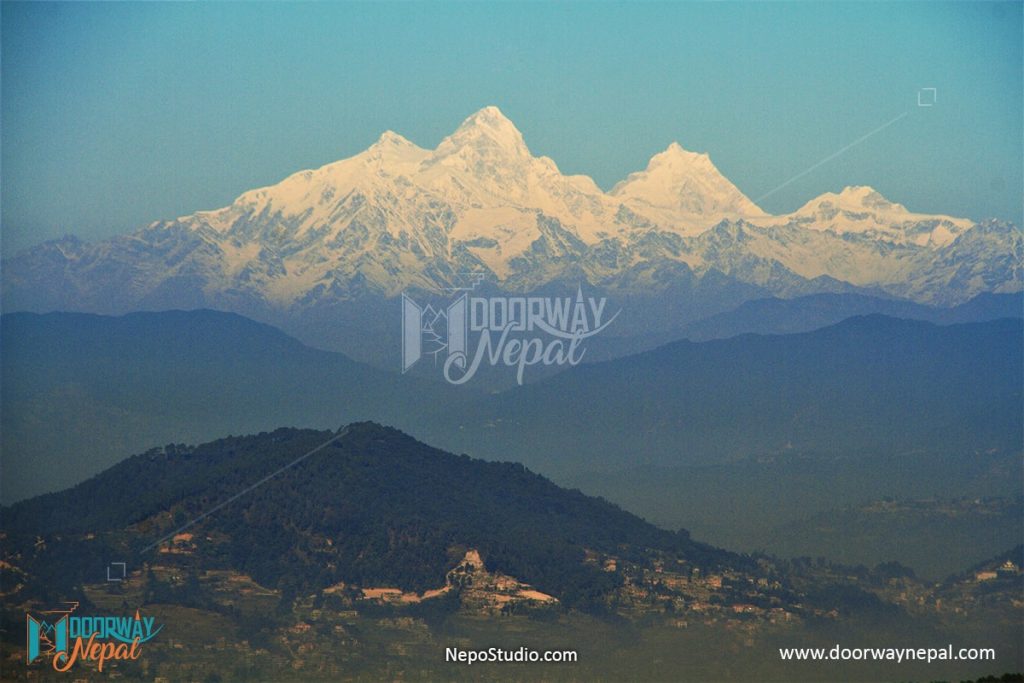
Then there is another enormous sized statue of Gautam Buddha. It is beautiful to look at and will let you ponder how one can be able to make such idols. Along with that there are two medium sized caves built near it, resembling the caves built hundred years ago. So how do you get here? If you are going in a group it is better to hire a micro bus which will cost you around Rs 5,000 for two way trip. If you are comfortable with public buses then opt for public vehicle. You can get it from Ratnapark to Banepa. Then as you reach Banepa you need to change the bus to local bus that passes through Namo Buddha. Or you can go hiking from Banepa passing through Panauti.
Cover Photo: Cree Panta, Contributor, Wikimedians of Nepal



